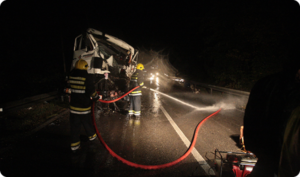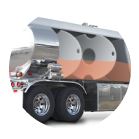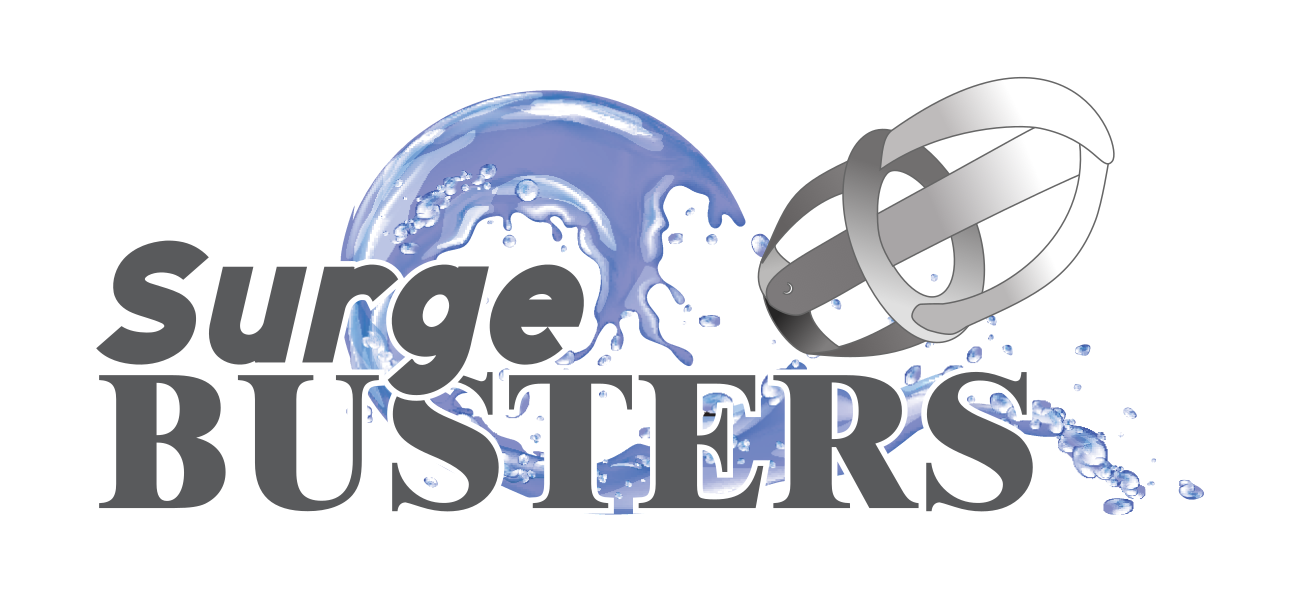Are You Driving Around with a Ticking Time Bomb?
The Constant Threat of Transporting Liquid Loads
Transporting Liquid Loads is DANGEROUS
And until now, there has been no good solution

Liquid Surge
Liquid Surge is dangerous. Every year there are over 1300 cargo tank rollover accidents, with 94% of them occurring under partial loads when liquid surge is most threatening. Typical answers include welded in baffled tanks and separating liquids into multiple smaller tanks.

Unpredictable Driving Conditions
The most common accidents from liquid surge happen due to unpredictable driving situations, typically caused by other drivers, with 93% of accidents happening on dry roads, 75% happening in daylight, and 56% happening on straight roads. Because of this, MOST of the responsibility in controlling liquid surge is put on the shoulders of your drivers.

Major Accidents Expected
The threat of liquid surge is real, and significant for ANY tanker being driven with a partially filled load. Because of this, businesses that are forced to operate under these conditions have to consider the risk, and will simply write the likelihood of an accident into their financial planning.

Fewer Accidents = Lower Costs
Aside from the primary material benefits, you can observe significant benefits for your drivers, equating to higher retention of current and easier acquisition of new drivers.
Most recommendations for minimizing the danger of rollover accidents, or accidents involving partially filled liquid tanks, are centered around a greater level of training, awareness, and responsibility for the driver.
They’ll recommend a greater amount and more in-depth training for safety protocols while driving, and they’ll recommend heightened awareness from the driver.
This is because 78% of rollovers are considered to be caused by driver error.
A Solution Which Doesn’t Depend on Human Behavior
But consider this … the analysis of driver error puts management of the liquid load in the hands of the driver, so if the liquid load surge causes the truck to roll or triggers an accident, the analysis will consider the driver to have mishandled that liquid load (and fault will be placed on the driver, NOT the load).
When you consider that there IS a solution that eliminates 96% of liquid surge energy within the tank itself, it suddenly seems irresponsible to blame the drivers. Not to mention that added responsibility is added stress for your drivers.
So, not only can you reduce stress on your drivers, but you can almost entirely significantly mitigate risk by removing the liquid surge factor.

Most Liquid Surge Solutions FAIL

Welded Baffles
Welded-in baffles are the most common tool for handling liquid surge. Their design disrupts the build-up of surge through the whole tank, however, the design still transmits surge energy into the tanker itself. It’s better than NO baffles, but it doesn’t actually remove surge from the equation.

Driver Training
The most common answer to handling liquid surge overall is “better driver training.” Because liquid surge is seen as an ever-present threat, and most solutions can’t actually handle surge well, the fallback is for drivers to be held responsible for better driving, to limit the situations when liquid surge causes an accident.

Write it into the books
Of course, when all else fails, liquid surge accidents can be handled through insurance and financial planning. Since liquid surge is inevitable (especially if you don’t have a solution that eliminates surge energy), then you have to “write it into your books” to solve the problem on a business level.

The Truth Is …
Liquid Surge can be eliminated by 96%
With Surge Busters, you can eliminate 96% of surge energy from ever even transferring into your vehicles. This reduces the stress on your drivers, reduces the physical stress on your vehicles, translating to lower maintenance costs, and reduces the financial risk to your business significantly.

